Rose Center for Earth and Space
Central Park West and 81st Street
Manhattan
Natural History special issue
Part of City of Stars photo essay.
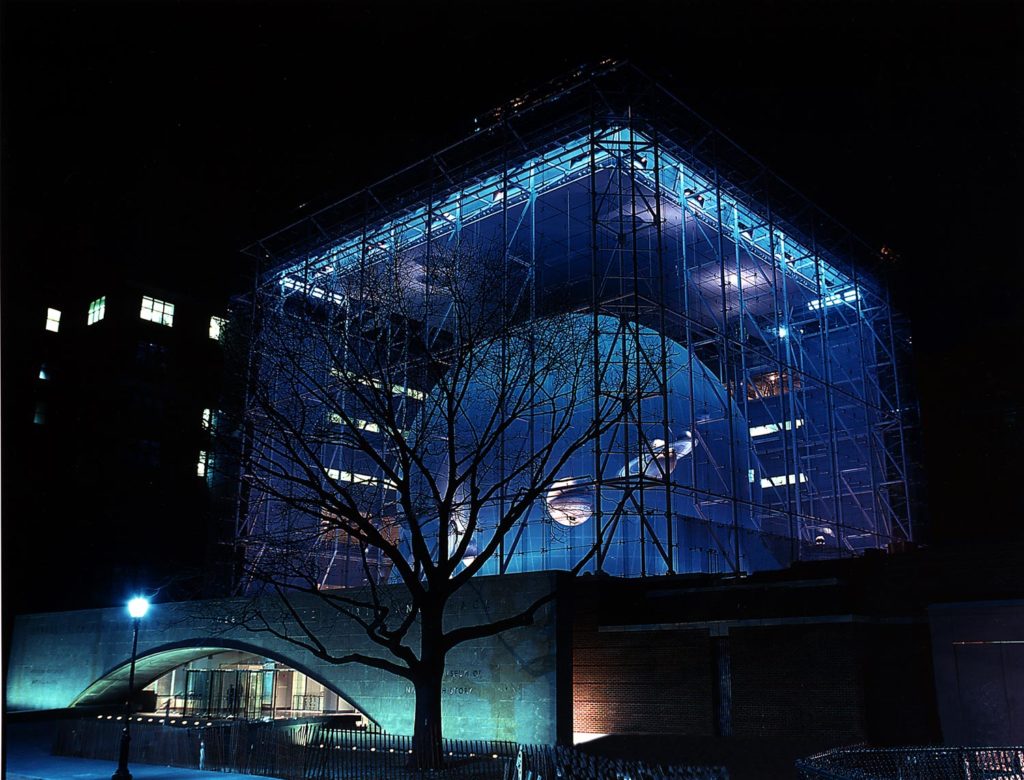
Like so much of New York City, the Rose Center for Earth and Space takes on a magical glow at night. Softly illuminated by deep blue light, the 87-foot Hayden sphere contains the 430-seat Hayden Planetarium Space Theater in its upper half. The lower half contains a venue where the universe gets born a dozen times per hour: a walk-through recreation of the big bang.
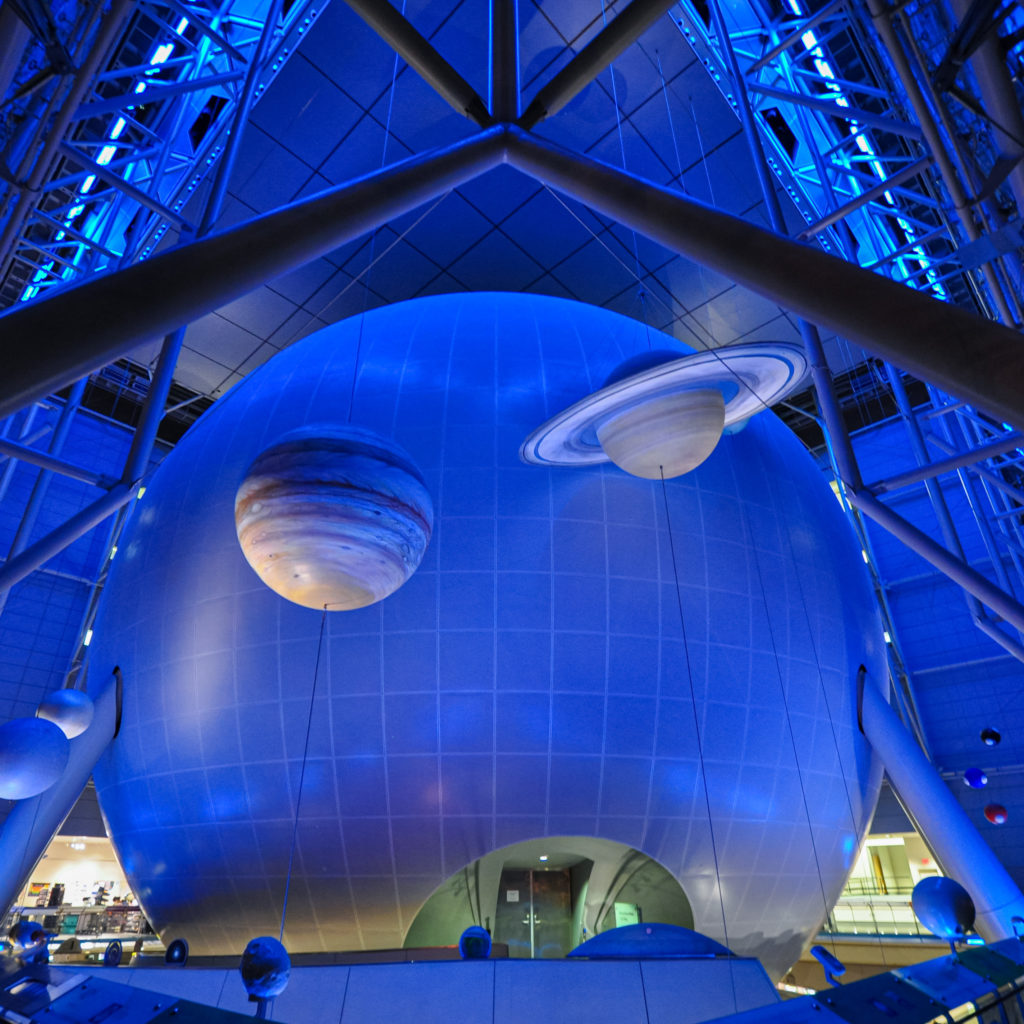
The sphere further serves as a reference for the relative sizes of cosmic objects, such as the planets suspended in the space around it. Within the glass cube is the suite of offices that house the Museum’s new Department of Astrophysics, in which research is conducted on the scientific frontier. Just west of the giant glass structure lies a terrace where colored lights and jets of water represent the principal stars of the constellation Orion, and inlaid granite suggests the shadow geometry of an eclipse.
Armillary Sphere
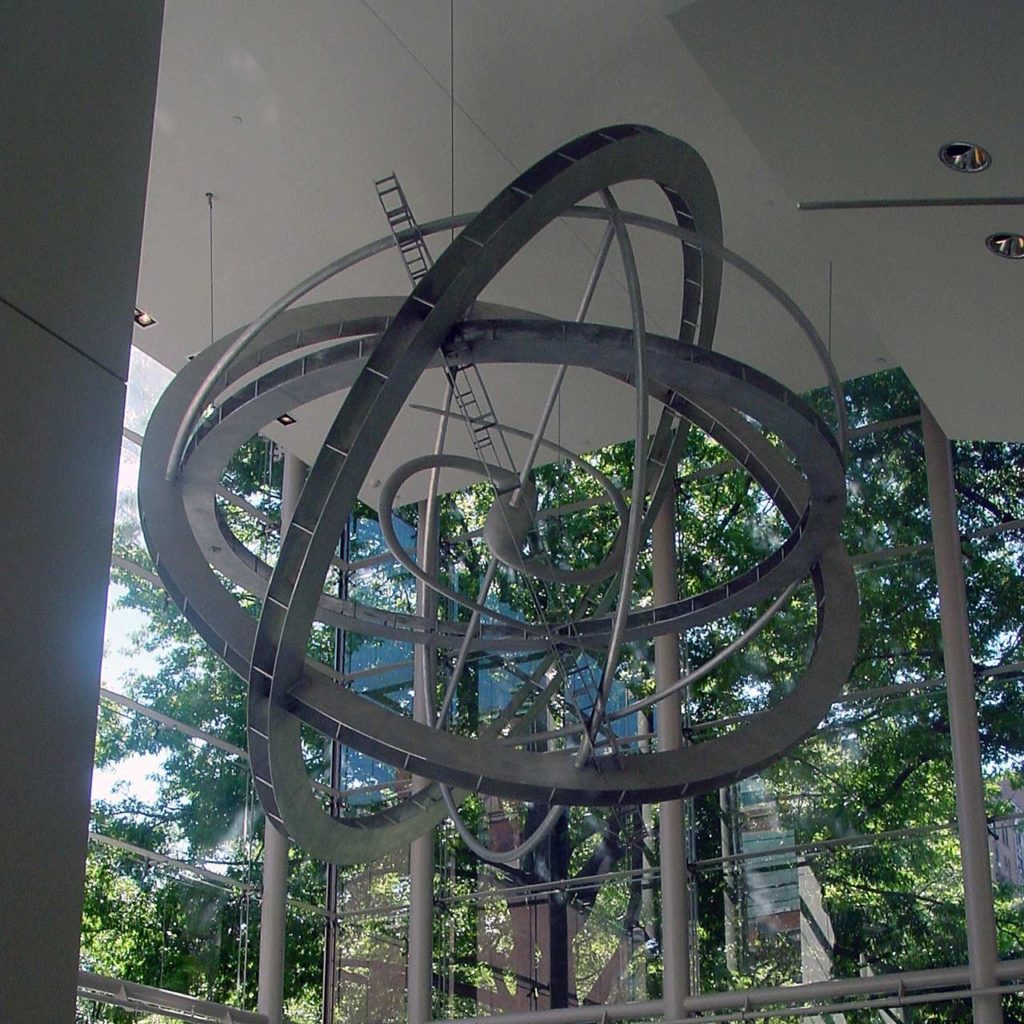
The traditional armillary sphere places Earth at its center, surrounded by movable rings representing coordinates suitable for measuring the positions and movements of the Sun, Moon, planets, and stars around us. Rings typically represent the celestial equator (Earth’s equator projected on the sky) and the ecliptic (the Sun’s annual path against the background stars). Inherently geocentric, the traditional armillary sphere remains a handy device for teaching the night sky to the uninitiated.
For the Rose Center, armillary sphere concept has been updated. Instead of Earth at the center, the Milky Way galaxy is there. Deep within our spiral galaxy is, of course, Earth and the rest of our solar system, whose frames of reference we haven’t abandoned. Various rings track nested coordinate systems—from Earth’s surface to the farthest reaches of the universe. The innermost ring depicts New York City’s horizon, while the other rings denote the celestial equator, the ecliptic, the galactic plane, and the supergalactic plane (the flattened distribution of the thousand or so galaxies in the Virgo Supercluster). Where relevant, the ring orientations correspond exactly with the sky as it appeared above New York City at midnight on December 31, 1999—the occasion of the Rose Center’s opening gala.
Scaling Walk
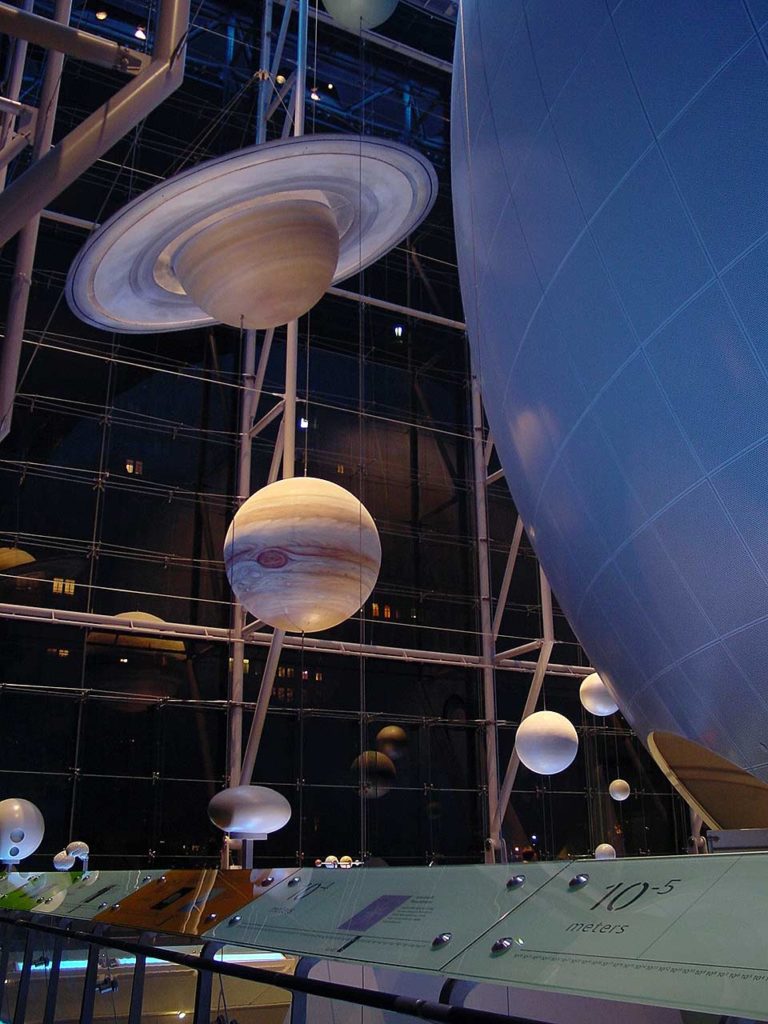
Using the 87-foot sphere as a template, the Rose Center’s Scaling Walk invites the visitor on a journey from the largest to the smallest objects in the universe—a descent through more than forty powers of ten. You are first invited to think of the sphere is the observable universe, in which case the Virgo Supercluster of galaxies, to which the Milky Way belongs, sits along the railing as a model 1⁄100the size of the sphere. Walk a few steps and the same sphere now represents the Virgo Supercluster, while the model 1⁄100 its size (also sitting along the railing) reprents the Milky Way’s local group of galaxies. On the scale of the solar system, the sphere stands for the Sun, with models of the planets hanging nearby. And so it goes, down into the realms of molecules and subatomic particles. The journey doesn’t end until the visitor has walked past models of cells, viruses, molecules, atoms, and atomic nuclei. In the final demonstration of scale, the huge sphere is the hydrogen atom, and a dot the size of the period at the end of this sentence is the lone proton in a hydrogen atom’s nucleus.
Heilbrunn Cosmic Pathway
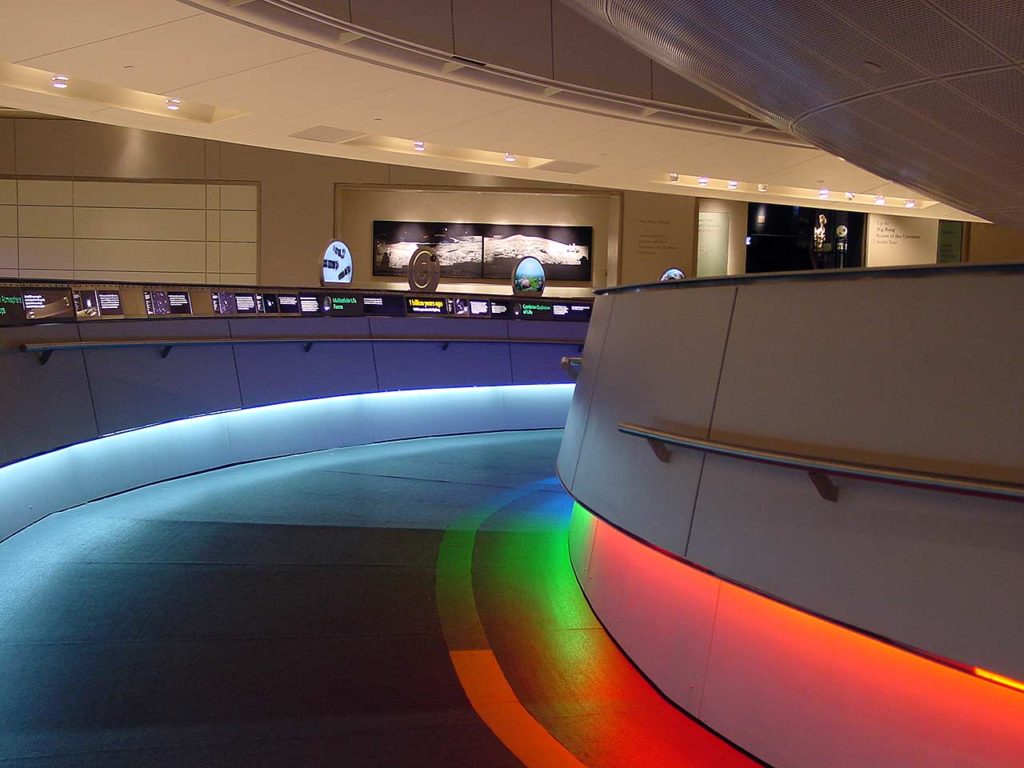
Unfurled, the gently curved pathway leading from the Big Bang Theatre would be longer than a football field. Here it doubles as a timeline, allowing the Museum visitors to walk the 13-billion-year history of the cosmos. Graphic milestones along the way depict every important phase of the evolving universe—the formation of stars, star clusters, galaxies; the Age of Quasars, the formation of the Milky Way, the formation of our solar system, the formation of life on Earth, and so forth. Every step brings the journey 70 million years closer to present day. Earth doesn’t form until two-thirds of the way down the ramp. Just a few steps more, and single-celled life appears. Life stays at this stage for 3 billion years, as Earth’s ecosystem becomes slowly enriched with the oxygen released by these organisms. With only eight paces to go on the pathway, we pass the famous Cambrian explosion of life. Here, living things are finally getting interesting—for the first time bearing limbs for locomotion and eyes for sight. With only three paces to go, dinosaurs rise to prominence. One pace left, and they go extinct by a killer asteroid. Of their kind, only the birds remain.
“Where are humans?” you ask. At the end of the ramp, a single strand of human hair is mounted in a glass frame. On the pathway’s scale of time, its thickness equals 30,000 years. The left side of the hair corresponds to the days when cave dwellers drew pictures on their walls; the right side corresponds to the present.
Cullman Hall of the Universe
Beneath the Rose Center sphere lies a 20,000-square-foot exhibition space devoted to our fundamental understanding of planets, stars, galaxies, and the universe. Unlike the Museum’s dinosaur halls (or, for that matter, every other hall in the Museum) the Cullman Hall of the Universe has few artifacts—instead, featuring models and interactive displays of astrophysical concepts and principles. Most astrophysical artifacts, if put on display, would rip apart and eat visitors who came too close. The Museum’s Tyrannosaurus rex would, of course, do this too, but he’s dead, and all that’s left of him are bones.
The section devoted to planets, for example, goes beyond the old schoolroom practice of merely counting and naming members of the Sun’s orbital family. Rather, it encourages visitors to think about objects according to their shared properties. Thus, we have the small, rocky planets (Mercury, Venus, Earth, Mars); the asteroid belt (with its countless chunks of shattered worlds), the gas giants (Jupiter, Saturn, Uranus, and Neptune, with their thick atmospheres, ring systems, and many moons); a belt of small, icy bodies (including Pluto) left over from the formation of the solar system and orbiting just beyond Neptune; and a larger “cloud” of comets whose orbits extend halfway to the stars.

